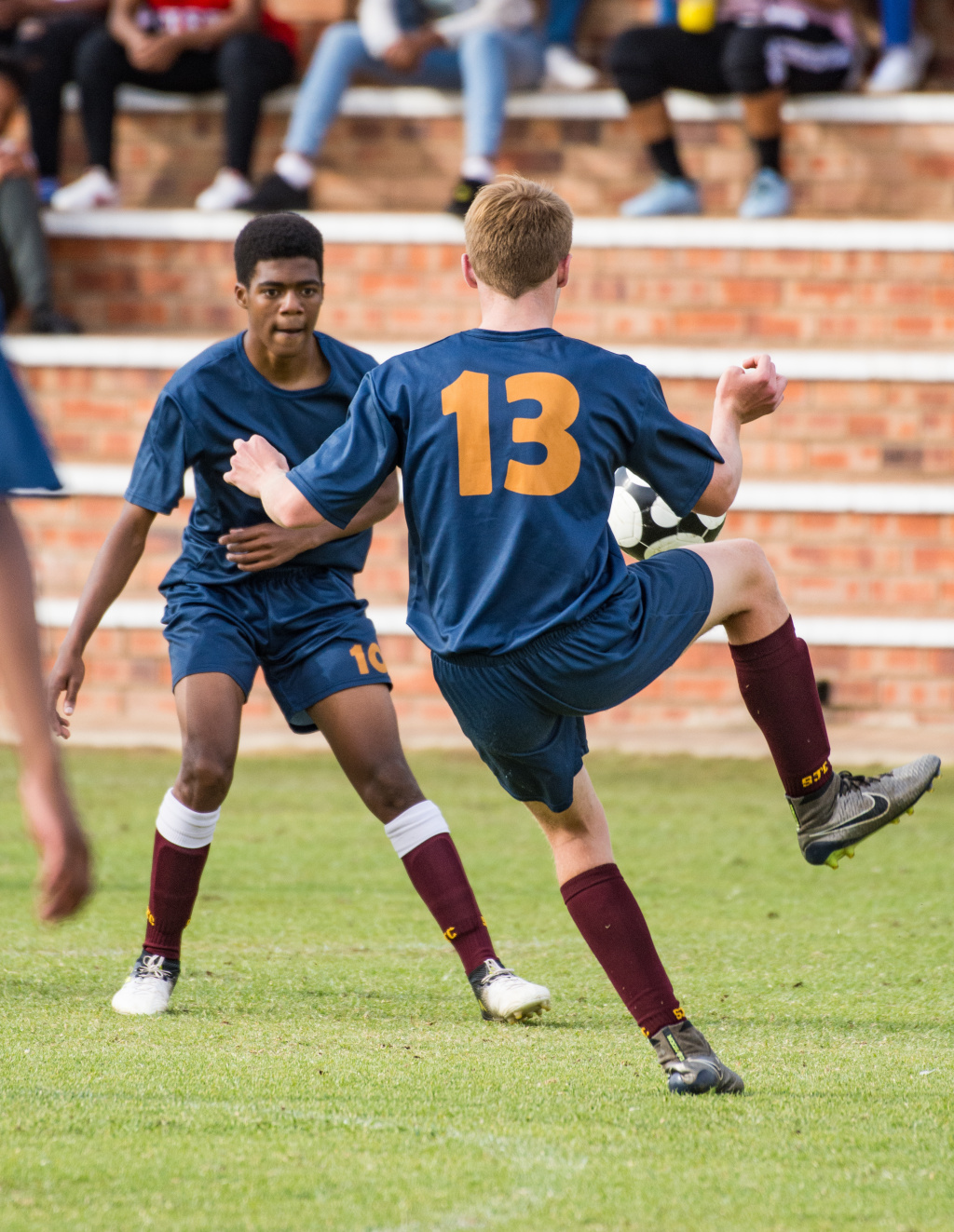St John’s played Association Football from the time the Community of the Resurrection assumed control-and possibly before-until the end of 1991.
The game was organized on an inter-school basis. Leagues were run for boys under 19, under 15, under 14 and under 13. In 1907 the school entered for the Junior Leagues, and in 1908 for the Senior Leagues. Early records show that the school had a good measure of success in the Junior Leagues but the matches in the Senior Leagues were always desperate struggles against heavier teams. As far back as 1911, after the hard and unsuccessful struggle against Johannesburg College (now K.E.S) the Headmaster in his School ‘Letter’ doubts “whether we are strong enough for this match”.
In the early days the coaching was done by Nash, Alston and a young master, J Lowden (who fell in the 1914-18 War). Stanley Dodson who arrived in 1915, coached the First Eleven until 1931 except for a brief interval in 1918 when he was away on war service.
Some of the accounts of Nash of those early days, 1906-10, because of their frankness make interesting reading. “The final match of 1909 year was played at the Wanderers on 3 September between St John’s and Jeppe. Our boys played their best game of the year winning 3-1. The Silver Shield was presented on the grounds by the Secretary of the Schools League, Mr Fletcher, and brought up in triumph; and after much polishing was hung up in the dinning hall where it is to repose for a year”.
It must have been a good year in 1909. The second League competition (u15) was also won by St John’s under the captaincy of O.A. Reid. St John’s won this league again in 1913 while on at least three occasions our Third League side headed its division. Football throughout those years was played hard, on bare soil, utterly devoid of grass and was therefore vary fast. The ball was much lively than on grass grounds, and, correspondingly, much more difficult to control.
The position of the School team in the league was a factor of importance, what really mattered was the results of the 1st XI game vs King Edward’s. When therefore in 1924 we beat King Edwards 3-1, after a period of ten years during which we had managed to avoid defeat only in the two drawn games in 1917 and 1918. In 1928 and 1929 the school was again victorious over it’s neighbour. The following year saw St John’s football at its best: the school won the Championship of the school Senior League for the first and only time in its history. In this year, 1930- the last of Hill’s Headmastership St John’s best K.E.S twice with the final game ending 2-1. Hill and his coach Stanley Dodson decided that this triumph-the culmination of more than twenty years of struggle against heavy odds-should have a visible and permeant record; and so, above the window of the East face of the College tower “a stone bears the inscription 1stXI 1930, for all the subsequent generation of St John’s boys to note and applaud”. In 1931 the last year the College played Soccer, the School played thirteen games, lost eleven, drew one and won one.
Football was reintroduced to St John’s College in 2003 although the Prep school continued playing from 1930. 120 pupils arrived at the first practice session. The coaches were pleasantly surprised at the talent on display and the bold decision was taken to enter fixtures with the traditional boy’s schools.
The College currently puts out eight teams per year, two teams per age group (u14, u15, u16, Open). The season runs for the whole of the September with the College competing against the likes of King Edward; Jeppe; Parktown, St Stithians; St David’s and many more schools around Johannesburg. The teams also have the opportunity to display their talents at a number of tournaments held over the season such the Parktown u14 tournament, St David’s u15 and Open tournament as well as the St Peters Open tournament with the teams performing particularly well at these tournaments. Since the reintroduction of football its popularity continues to grow and the demand for the sport to take its right fill place in the school sports programme is increasing.


